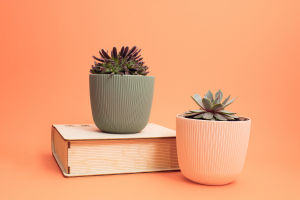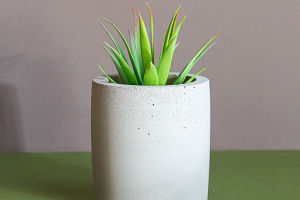Aloe vera, often called the "plant of immortality," has earned its reputation as a powerful healer.
Its thick, succulent leaves contain a gel that is packed with vitamins, minerals, and amino acids, making it a staple in both medicine and cosmetics.
But what makes aloe vera so special, and how can you make the most of this green miracle in your own home?
Let's dive into the healing properties, uses, and care tips for aloe vera.
The Healing Powers of Aloe Vera
Aloe vera is renowned for its soothing and healing properties. The gel inside its leaves contains compounds such as polysaccharides, which have anti-inflammatory and antibacterial effects. This makes aloe vera an effective treatment for a range of skin conditions, from minor burns to acne and eczema. Applying aloe vera gel to a burn or sunburn provides instant relief, while regular use can help to reduce scarring and promote faster healing.
But aloe vera's benefits aren't limited to just external use. When consumed, aloe vera juice can aid digestion, alleviate constipation, and even boost the immune system. However, it's important to consult with a healthcare provider before ingesting aloe vera, as it can have potent effects and should be used with caution.
Aloe Vera in Modern Medicine and Cosmetics
The use of aloe vera in medicine dates back thousands of years, with ancient Egyptians and Greeks documenting its use for treating wounds and skin ailments. Today, aloe vera is a common ingredient in over-the-counter creams, lotions, and ointments, particularly those designed to treat burns, rashes, and dry skin. Its hydrating and anti-inflammatory properties make it a key component in many skin care products aimed at soothing irritation and moisturizing the skin.
In the beauty industry, aloe vera is prized for its ability to improve skin elasticity, reduce wrinkles, and maintain a youthful appearance. It's often found in face masks, moisturizers, and after-sun products, where its cooling and hydrating properties help to refresh and rejuvenate the skin.
Growing Aloe Vera at Home: Tips and Tricks
Aloe vera is not only beneficial but also incredibly easy to grow at home. This hardy plant thrives in warm, sunny conditions and requires minimal care, making it an ideal choice for both novice and experienced gardeners.
Light and Watering: Aloe vera needs plenty of sunlight to thrive, so place it in a bright spot, preferably on a windowsill that receives direct sunlight. However, too much direct sunlight can cause the leaves to turn brown, so a balance is key. Water your aloe vera plant sparingly—overwatering is a common mistake that can lead to root rot. Wait until the soil is completely dry before watering, and then soak the soil thoroughly.
Potting and Soil: Aloe vera prefers well-draining soil, such as a cactus or succulent mix. If you're using regular potting soil, add sand or perlite to improve drainage. Choose a pot with drainage holes to prevent water from accumulating at the bottom.
Propagation: One of the joys of growing aloe vera is its ability to produce "pups," or baby plants, which can be easily propagated. Simply remove the pup from the base of the mother plant and replant it in its own pot.
Aloe vera is much more than just a decorative plant; it's a powerful healer and beauty booster. Whether you're using it to soothe a burn, enhance your skincare routine, or simply enjoy its low-maintenance beauty, aloe vera is a plant that deserves a place in every home. By understanding its benefits and learning how to care for it, you can harness the full potential of this green miracle.


